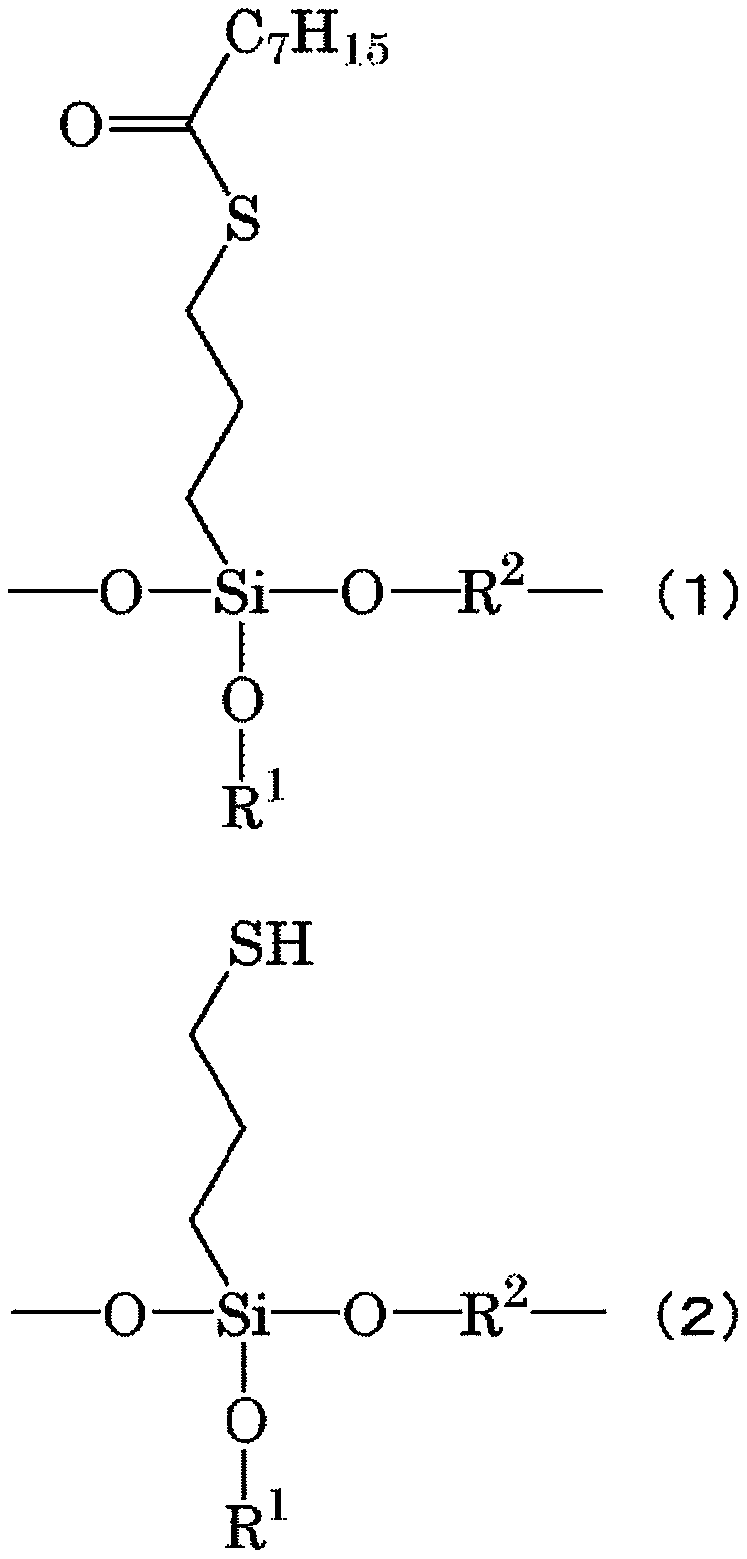Pneumatic tire
A technology of pneumatic tires and treads, which is applied to special tires, tire parts, tire treads/tread patterns, etc., which can solve problems such as no mention of grip performance, and achieve excellent handling stability and high-temperature grip excellent wear resistance and improved cutting and chipping resistance
- Summary
- Abstract
- Description
- Claims
- Application Information
AI Technical Summary
Problems solved by technology
Method used
Image
Examples
manufacture example 1
[0164] Production example 1 (production of modified NR)
[0165] After adjusting the solid content concentration (DRC) of natural rubber latex (fresh latex obtained from Taitex Corporation) to 30% (w / v), 10 g of Emal-E and 20 g of NaOH were added to 1000 g of natural rubber latex, and it was carried out at room temperature for 48 hours. Saponification reaction to obtain saponified natural rubber latex. Water was added to this latex to dilute it until the DRC became 15% (w / v), then formic acid was added while stirring slowly, and the pH was adjusted to 4.0 to 4.5 to aggregate. The aggregated rubber was pulverized, washed twice with 1000 mL of water, and then dried at 110° C. for 2 hours to obtain a solid rubber (modified NR). With respect to the solid rubber (modified NR) obtained in Production Example 1 and the above-mentioned natural rubber, the nitrogen content, phosphorus content, and gel content were measured by the methods shown below. The results are shown in Table 1. ...
manufacture example 2
[0176] Production example 2 (production of modified SBR)
[0177] A stainless steel polymerization reactor with an internal volume of 30 liters and a stirring device was washed and dried, and the gas inside the polymerization reactor was replaced with dry nitrogen. Then, industrial hexane (density 680kg / m 3 ) 15.3kg, 912g of 1,3-butadiene, 288g of styrene, 9.1mL of tetrahydrofuran, and 6.4mL of ethylene glycol diethyl ether were put into the polymerization reactor.
[0178] Next, in order to detoxify in advance the deactivated impurities acting on the polymerization initiator, a small amount of hexane solution of n-butyllithium was put into the polymerization reactor as a scavenger. A n-hexane solution of n-butyllithium (19.2 mmol of n-butyllithium content) was charged into the polymerization reactor to initiate a polymerization reaction. Polymerization was carried out for 3 hours. During the polymerization reaction, the temperature in the polymerization reactor was adjuste...
Embodiment 1~6 and comparative example 1~5
[0180] According to the content of the formula shown in Table 2, in the formula material, the chemicals other than the vulcanizing agent and the vulcanization accelerator were mixed with a 1.7L Banbury internal mixer for 5 minutes until the discharge temperature reached 150°C to obtain a mixed things. Next, sulfur and a vulcanization accelerator were added to the obtained kneaded product, and kneaded for 5 minutes until the temperature reached 80° C. using a twin-screw mill to obtain an unvulcanized rubber composition.
[0181]
[0182] The obtained unvulcanized rubber composition was vulcanized at 170° C. for 10 minutes to produce a vulcanized rubber sheet.
PUM
| Property | Measurement | Unit |
|---|---|---|
| particle size | aaaaa | aaaaa |
| particle size | aaaaa | aaaaa |
| specific surface area | aaaaa | aaaaa |
Abstract
Description
Claims
Application Information
 Login to View More
Login to View More - R&D
- Intellectual Property
- Life Sciences
- Materials
- Tech Scout
- Unparalleled Data Quality
- Higher Quality Content
- 60% Fewer Hallucinations
Browse by: Latest US Patents, China's latest patents, Technical Efficacy Thesaurus, Application Domain, Technology Topic, Popular Technical Reports.
© 2025 PatSnap. All rights reserved.Legal|Privacy policy|Modern Slavery Act Transparency Statement|Sitemap|About US| Contact US: help@patsnap.com



